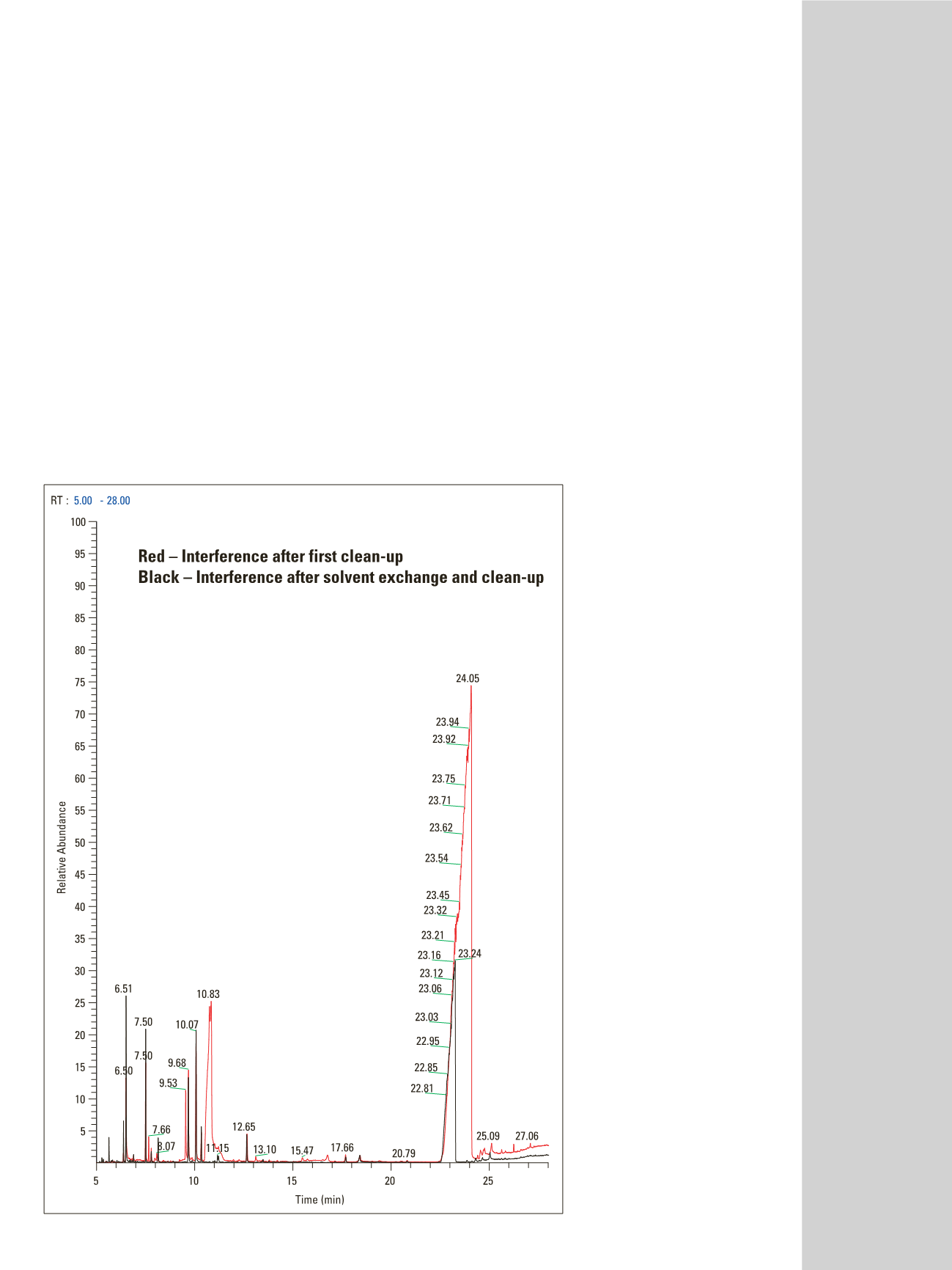
The tube was capped and vortexed for 30 seconds.
The cap was removed and the powder reagents were poured
slowly into the MeCN layer. The cap was tightened
securely on the 50 mL extraction tube, and was vortexed
for 30 seconds until all of the powder reagents were
mixed with the liquid layers. The tube was placed on a
mechanical shaker for 5 minutes and then centrifuged for
5 minutes at 3000 rpm. Next, 11 mL of the top MeCN
layer was removed and transferred to a 15 mL clean-up
tube. This tube was capped and vortexed for 30 seconds
and centrifuged for 5 minutes at 3000 rpm. A 5 mL aliquot
of the top layer was transferred into a clean test tube for
solvent exchange.
Solvent Exchange
The 5 mL aliquot of cleaned-up extract was evaporated to
dryness with a gentle stream of nitrogen at 40 °C in about
two hours. A film formed on top of the solvent layer and
samples required mixing to break the film and continue
the evaporation process. Care was taken to remove the
tube immediately when dried. Approximately 1 mL of
extracted compounds from the tea remained in the tubes
after evaporation. A 900 µL aliquot of hexane/acetone
(9:1) was added and 100 µL of the internal standard,
d10-parathion, was spiked into the organic solution. The
tube was capped and vortexed for 15 seconds. The 1 mL
of extract was transferred to a 2 mL clean-up tube, capped
tightly, and vortexed for 30 seconds. After centrifuging for
5 minutes at 3000 rpm, 200 µL of the lightly colored
extract was transferred to an autosampler vial with a small
glass insert for injection on the ITQ 700
™
. The individual
calibration levels were spiked into each extract for the
calibration curve in matrix before the final cleanup step
(Figure 1).
Page 3 of 8
Figure 2: Comparison of a single cleanup
step (red) against solvent exchange/final
cleanup (black)


